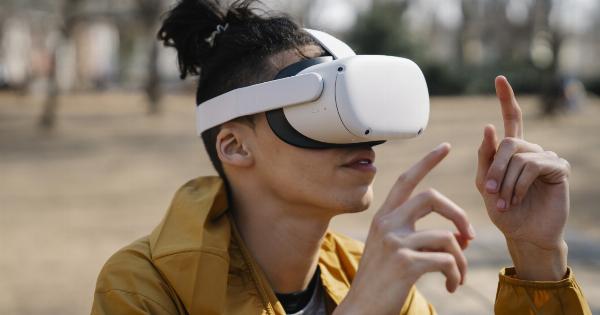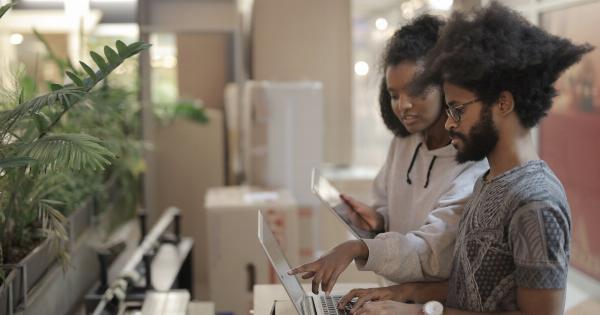Robotic technology has significantly advanced in recent years, pushing the boundaries of what machines can accomplish. One of the most exciting developments in this field is the ability to recreate the sense of touch in robots.
This breakthrough has far-reaching implications and has the potential to revolutionize various industries, from healthcare and manufacturing to virtual reality and prosthetics. In this article, we will explore how robotic technology is helping bring back the sense of touch and the implications it holds for the future.
The Importance of the Sense of Touch
The sense of touch is crucial for human interaction and perception of the world. It allows us to feel and manipulate objects, detect textures, and experience the physical world around us.
The loss of touch can have a profound impact on a person’s quality of life, making even the simplest tasks challenging. Additionally, the sense of touch plays a vital role in safety, enabling us to identify temperature, pressure, and pain, which can prevent injuries and protect us from harm.
Haptic Technology: Enhancing Human-Robot Interaction
Haptic technology refers to the science of touch, focusing on replicating the sense of touch through vibrations, force feedback, and other tactile feedback mechanisms.
By integrating haptic technology into robots, engineers aim to create a more immersive and intuitive human-robot interaction. Haptic feedback enables robots to communicate with humans through touch, opening up a range of possibilities in various domains.
Applications in Healthcare
The healthcare industry stands to benefit immensely from advancements in robotic technology regarding touch. Surgeons can now perform complex procedures with greater precision using robotic surgical systems that provide haptic feedback.
This tactile feedback allows surgeons to feel the tissue’s texture and resistance, enhancing the accuracy of their movements and reducing the risk of errors.
Furthermore, robotic prosthetics equipped with haptic technology can greatly improve the lives of amputees.
Traditionally, prosthetic limbs lacked the ability to transmit tactile information, making it challenging for users to gauge their grip strength or detect objects’ temperature. With haptic-enabled prosthetics, individuals can experience sensations like pressure, texture, and temperature, enabling them to regain not only their sense of touch but also a greater sense of independence and control.
Advancements in Manufacturing
The manufacturing industry has also witnessed significant advancements with the implementation of robotic tactile sensing. Robots equipped with touch sensors and haptic feedback can perform delicate tasks with enhanced precision.
For example, in electronics manufacturing, robots with haptic abilities can detect the subtlest fluctuations in pressure or temperature, ensuring the accurate placement of small components.
Additionally, haptic technology allows robots to interact safely with humans in collaborative manufacturing environments.
By providing robots with tactile sensing capabilities, they can work alongside human operators, making them more adaptable and responsive to human touch. This not only enhances productivity but also improves worker safety by allowing humans and robots to operate efficiently in close proximity without the risk of injury.
Enhancing Virtual Reality Experiences
Virtual reality (VR) has revolutionized entertainment and gaming, providing users with immersive digital experiences. However, early VR systems primarily focused on visual and auditory sensations, neglecting the sense of touch.
The integration of haptic technology in VR devices is changing this, adding a new level of realism and interactivity to virtual experiences.
Now, users can feel haptic feedback through specialized gloves or haptic suits that simulate touch and texture. For example, in a VR game, users can feel the impact of punches or the texture of virtual objects they interact with.
In the field of architecture and design, haptic feedback enables users to physically feel and manipulate virtual prototypes of buildings or products, enhancing the design and evaluation process.
Challenges and Future Outlook
While robotic technology has made significant strides in recreating the sense of touch, there are still challenges to overcome. Developing highly sensitive and durable sensors that can mimic the complexity of human touch remains a technical hurdle.
Additionally, the integration of haptic technology in consumer products at an affordable cost is still a work in progress.
However, the future looks promising. As advancements in materials, sensors, and artificial intelligence continue, so will the capabilities of robotic technology in replicating touch.
This opens up endless opportunities in medicine, manufacturing, virtual reality, and other fields, with the potential to enhance human lives and reshape industries.
Conclusion
The ability to bring back the sense of touch in robots through haptic technology is a significant breakthrough that holds immense potential for various sectors.
From healthcare to manufacturing and virtual reality, the integration of touch into robotic systems enhances human-robot interaction and opens up new possibilities. While there are challenges to overcome, continued advancements in robotic technology will undoubtedly pave the way for a future where robots can not only see and hear, but also touch and feel.



























